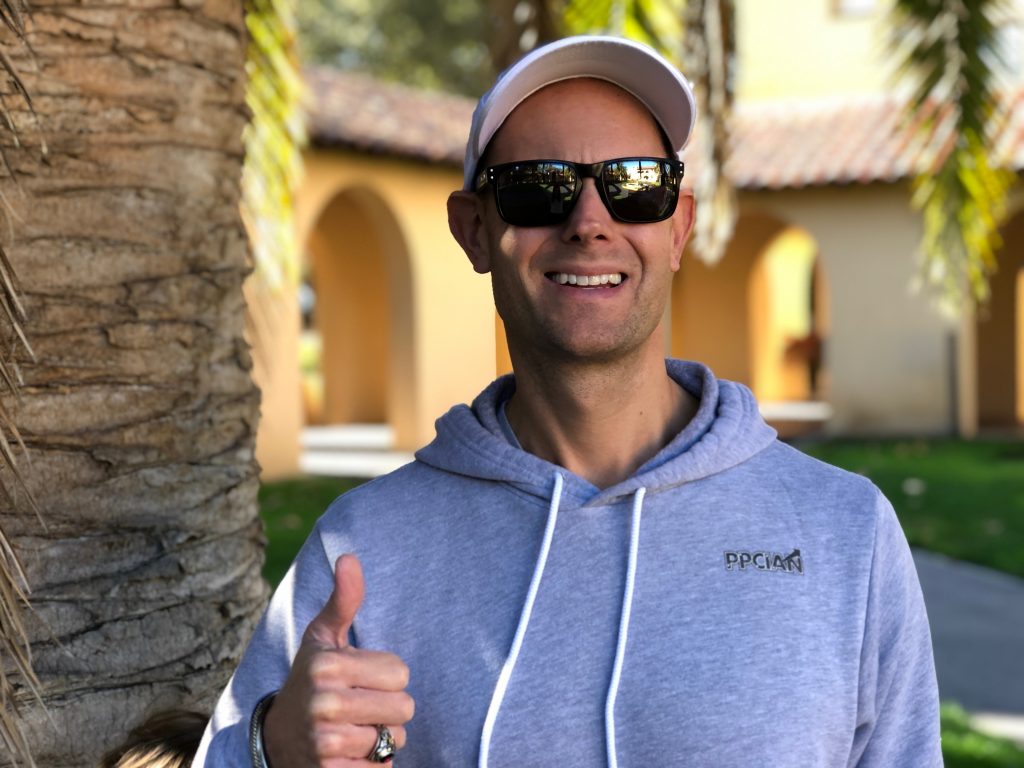A big purpose of PPC Ian Dividend Investing For Everyone is community. We are a community of like-minded dividend investors, almost 50,000 strong, and we support each other. The community is becoming stronger and stronger, and we have experts around the world with deep knowledge across many different sectors.
 I recently filmed a video on bank stocks, specifically analyzing an existing position of mine, Bank of Montreal (BMO), versus some of the large US banks, Wells Fargo (WFC), Bank of America (BAC), and JP Morgan Chase (JPM). When it comes to analyzing dividend stocks, especially consumer non-cyclicals, I consider myself one of the true experts out there. In certain niches, such as sin stocks, I consider myself one of the top analysts around. When it comes to banks, however, I’m newer to the game.
I recently filmed a video on bank stocks, specifically analyzing an existing position of mine, Bank of Montreal (BMO), versus some of the large US banks, Wells Fargo (WFC), Bank of America (BAC), and JP Morgan Chase (JPM). When it comes to analyzing dividend stocks, especially consumer non-cyclicals, I consider myself one of the true experts out there. In certain niches, such as sin stocks, I consider myself one of the top analysts around. When it comes to banks, however, I’m newer to the game.
Ian’s Bank Stock Video
It’s a new year, so I figured I would just go for it. It’s this thirst for knowledge that makes life interesting. I have said this a few times on my YouTube Channel, and I cannot stress it enough: The knowledge that comes from investing is perhaps greater than the profits!
When I filmed my bank stock video, I specifically asked members of the community to comment with thoughts, ideas, and feedback, especially those with deep experience analyzing bank stocks. Today’s blog post encapsulates a few lessons I personally learned from the community, and the research I embarked upon after receiving feedback. We are nearly 50,000 dividend investors strong and there is true strength in our community. We are dividend investors supporting other dividend investors!
Goodwill – My Knowledge Evolves
As a fundamental stock analyst, I have always enjoyed analyzing balance sheets. I especially pay attention to cash and cash equivalents when it comes to assets, and debt when it comes liabilities. Concepts like goodwill and intangibles have always been rubbish to me (not true assets). Even more tangible assets like inventories are deeply discounted in my modeling. My overall viewpoint here does not change. However, my understanding of how goodwill works at a technical level has evolved. Here’s what I learned:
When a company acquires another, there are three variables that matter (when it comes to goodwill): Purchase Price (P), Assets of the company being acquired (A), and Liabilities of the company being acquired (L). When P is greater than A – L (meaning the company making the acquisition pays more than book value for the acquisition), the difference is carried on the books as goodwill. Then, as each year progresses, there is an opportunity to charge down goodwill for impairment should the acquisition not perform as expected (it’s worth less than previously thought).
Personally, I never assigned value to goodwill in my modeling, and that doesn’t change. I don’t think it’s a true asset. In my opinion, if a company is to go bankrupt and liquidates all assets to pay off liabilities, I do not think the company will get much value for their goodwill. There’s not much of value there except, possibly, some trademarks and patents. Even, then, I do not think goodwill is worth much in a liquidation setting. Hence, my viewpoint on goodwill stays the same.
That said, my technical understanding evolves as I had previously though that the company making the acquisition could arbitrarily assign goodwill at a certain level. I had even thought that a company could assign goodwill to its own operations. This is not the case, it’s a strict mathematical formula based on the acquisition cost.
Intangible Assets – My Knowledge Evolves
In my investigation of goodwill, I also learned some new knowledge about intangible assets. When it comes to trademarks, for example, they will typically show up as goodwill when a company acquires another (and the company being acquired has trademarks of value). Sometimes a company will purchase intellectual property (not purchase an entire company just some patents and trademarks), and such property becomes an intangible asset on the balance sheet of the company making the purchase.
However, when a company organically builds a brand name or patent portfolio, my new understanding is that there is no arbitrary mechanism to assign value to such intangibles on the balance sheet. Those home-brewed intellectual property assets typically cannot be valued on the balance sheet because the market has not validated their worth via an asset sale. Previously, I had thought that there was a mechanism to value home-brewed patents and trademarks.
While my overall philosophy remains the same (I don’t assign any value to goodwill nor intangibles in my own balance sheet analysis), it was truly fun learning these technical details about goodwill and intangible assets, furthering my own education. The beauty of dividend investing is the education never ends, even after being in the game for 20+ years.
Tier 1 Capital Ratio – Measuring a Bank’s Leverage
On the topic of banks, one subscriber also mentioned the importance of analyzing the Tier 1 Capital Ratio. Tier 1 Capital Ratio is defined as shareholder’s equity (assets minus liabilities) dividend by risk-adjusted assets. It’s a measure of leverage.
According to the Basel III Accord (and international standard that has been set to help provide worldwide stability in the banking system), banks must maintain a minimum Tier 1 Capital Ratio of 6% or higher. The higher the Tier 1 Capital Ratio, the better. Let’s compare for the banks in my analysis (from the last available annual reports).
- Wells Fargo (WFC): 13.46
- Bank of America (BAC): 13.2
- JP Morgan Chase (JPM): 13.7
- Bank of Montreal (BMO): 13.0
Based on this analysis, JPM is looking the strongest, with WFC as the runner-up. That said, WFC’s ratio is down year-over-year, so I’ll keep an eye on it. My beloved BMO is not looking as good, on this particular ratio, although the Canadian banks in general are much more levered than their US counterparts (different way of doing things and hence my overall interest in diversifying with WFC).
Just thought I’d share a few recent nuggets of wisdom with you all today. Wishing you all a fabulous 2020 of dividend investing! Thanks to all the experts in the community to contribute knowledge that helps us all!
Support PPC Ian
Want to say thanks for my YouTube videos, blog posts, investing workbooks, and overall work invested into the community? I now offer a custom line of dividend investing merch! You can support PPC Ian while showing you love for dividend stock investing. You can find my merch store here: https://teespring.com/stores/ppcian. Also, please do not forget to subscribe to My YouTube Channel.
DISCLOSURE: I am long Bank of Montreal (BMO). I own this stocks in my stock portfolio. Also, I will be initiating a position in Wells Fargo (WFC) soon.
DISCLAIMER: All information and data on my YouTube Channel, blog, email newsletters, white papers, Excel files, and other materials is solely for informational purposes. I make no representations as to the accuracy, completeness, suitability or validity of any information. I will not be liable for any errors, omissions, losses, injuries or damages arising from its display or use. All information is provided AS IS with no warranties, and confers no rights. I will not be responsible for the accuracy of material that is linked on this site.
Because the information herein is based on my personal opinion and experience, it should not be considered professional financial investment advice or tax advice. The ideas and strategies that I provide should never be used without first assessing your own personal/financial situation, or without consulting a financial and/or tax professional. My thoughts and opinions may also change from time to time as I acquire more knowledge. These are, as discussed above, solely my thoughts and opinions. I reserve the right to delete any comments for any reason (abusive in nature, contain profanity, etc.). Your continued reading/use of my YouTube Channel, blog, email newsletters, whitepapers, Excel files, and other materials constitutes your agreement with and acceptance of this disclaimer.
COPYRIGHT: All PPC Ian videos, Excel files, guides, and other content are (c) Copyright IJL Productions LLC. PPC Ian is a registered trademark ™ of IJL Productions LLC.

Ian I really like your investing strategy. And unlike most investment “experts”‘l believe your honest’ None of these advisors/experts would ever ‘say’ this,but wouldn’t it be wise in this current crash to just sell everything,to minimize your losses. After the dust settles you can buy more shares at a higher yield on cost.
Thanks for such a great review. I am only learning to invest. Therefore, I pay close attention to this material. I found your blog very useful, so I will add it to my favorites! Thanks again.
I must say that you have a great strategy. I’m just getting started with investing in dividends, so I have a long way to go. It is very valuable that you share your experience.
Rick, thanks for your kind words. Wishing you all the greatest!